August 18, 2015 (VoiceoftheFamily) — John Smeaton, Chief Executive of the Society for the Protection of Unborn Children, and co-founder of the international coalition Voice of the Family, spoke on 7th August at a two day pro-life conference organised by the bishops of Ghana. The conference was entitled “Protecting Life and Family Values in the continuing Culture of Death”.
In his talk to the conference Mr Smeaton outlined the threat posed to Africa by the international population control movement. He also drew attention to the collaboration between leading figures in that movement and important Vatican departments. He went on to give an overview of the threat posed to families, in Africa and around the world, by the instrumentum laboris of the Ordinary Synod, to be held in Rome in October this year. His full talk can be read below:
I begin by drawing your attention to National Security Study Memorandum 200 (NSSM 200). The National Security Council of the United States completed a study in 1974 entitled Implications of the Worldwide Population Growth for US Security and Overseas Interests known in short as NSSM 200.
NSSM 200, promoted and endorsed by Dr Henry Kissinger, President Nixon’s National Security Adviser, expressed the gravest fears that the political consequences of current population factors in the less developed countries might create “political or even national security problems for the US”.
A 1977 annual report on the implementation of NSSM 200 emphasises the strategic importance of using “intermediaries” such as the United Nations Fund for Population Activities (UNFPA), the World Bank and the International Planned Parenthood Federation (IPPF), since they could operate in countries where the United States “are not now acceptable” thus avoiding the accusation of imperialism.
This is exactly what Marie Stopes International (MSI) and International Planned Parenthood Federation (IPPF) and others are doing in Ghana today. According to the IPPF website, Planned Parenthood Association Ghana, IPPF’s subsidiary, delivered in Ghana in the year 2011:
5.8 million condoms
330,000 contraceptive services
526,000 other sexual and reproductive health services
606,000 services to young people under 25 years
When International Planned Parenthood Federation refer to “reproductive health” they are referring to access to contraception and abortion – according to the definition of “reproductive health” used by the UNFPA and other UN bodies, governments such the current US administration and international anti-life NGOs such as IPPF and MSI.
On 26th March 2014 in New York, the International Planned Parenthood Federation co-hosted an event, particularly targeting African nations, to “present a declaration calling for universal access to safe and legal abortion”.
Let me say a little here about President Obama because his policies affect all of us, not least the people of Ghana. On October 12th 2009 the Obama administration confirmed at the UN that it would be promoting legalised abortion throughout the world, targeting adolescents in a worldwide abortion drive.
British Prime Minister, David Cameron has threatened to withhold UK aid from poor countries that do not conform and I quote: “British aid should have more strings attached”. David Cameron was speaking here in particular of the UK government’s homosexual rights agenda.
The homosexual rights agenda in my nation and in so many other nations represents a massive attack on the sanctity of human life for many reasons. For example, as you know, same-sex couples are now demanding the right to have children– making it even more difficult for pro-life groups effectively to oppose surrogacy and in vitro fertilisation. According to peer-reviewed research, for every baby born by IVF, 23 are either discarded, or frozen, or used in destructive experiments, or miscarry. Defending the right to life of unborn children will increasingly be viewed as an attack on the rights of homosexual couples.
Morever, the homosexual rights’ agenda is a top priority for Planned Parenthood working here in Ghana.
Make no mistake, Planned Parenthood, hugely funded by the US government, the British government and the overwhelming majority of nations worldwide, are the enemy of Ghana’s children. In 2011, at the Commission on the Status of Women at the UN in New York, the International Planned Parenthood Federation, the Population Council and other pro-abortion groups held a meeting to launch worldwide a massive programme of so-called comprehensive sex education entitled: “It’s All One Curriculum”.
The curriculum shows itself to be nakedly polemical rather than educational. It states:
“People can support or join movements for social change at the global level. For example: …youth-led networks for sexual and reproductive rights and services.” (p.231)
And on page 61 of their curriculum guidelines they advise educators: “Certain social movements promote greater equality and dignity within marriage. These include: movements to legalize same-sex marriage”.
In the same document, International Planned Parenthood Federation tell teachers of young children that sexual self-abuse is a human right. They say:
“Sexuality may be expressed by oneself … Sexuality — expressed alone…can be a source of pleasure and meaning in life. (p.84) “ … Masturbation is an important way that people learn about their bodies and sexuality … Masturbation is a safe sexual behavior. It is neither physically nor mentally harmful.” (p.99)]
This is the kind of thing which Planned Parenthood is delivering to your children here in Ghana. In their “Access, Services and Knowledge (ASK) programme” which IPPF describes as a “‘ what young people want, what young people need’ programme” they target your 10 – 24 year-olds including underserved groups: The specific focus – an uptake of sexual and reproductive health (SRH) services. The 3 year programme targets African young people in Kenya, Uganda, Ethiopia, Ghana and Senegal.”
IPPF Africa Region says: “ASK aims to ensure that young people … receive direct information on sexual and reproductive health and rights so that they can make independent informed decisions.” For a full appreciation of IPPF’s concept of sexual rights I urge you to study Sexual Rights: an IPPF Declaration.
Moreover, yesterday, a story in The Ghanaian Times reports that the Norweigan Development Agency is targeting thousands of your 15 – 25 year-old young women in poor and urban and peri-urban areas of Ghana to introduce them, amongst other things, to sexual and reproductive health – a term meaning access to contraception and abortion.
Powerful Western forces as I speak are seeking to control your population by corrupting your nation’s values, in particular by targeting the innocence of your children and young people.
In a book entitled Adam and Eve after the Pill – Paradoxes of the Sexual Revolution, Mary Eberstadt, research fellow at the Hoover Institution, describes the teaching of Pope Paul VI inHumanae Vitae on regulation of birth, published on July 25, 1968, as “perhaps the most unfashionable, unwanted, and ubiquitously deplored moral teaching on earth”. She then goes on to show that the teaching of Humanae Vitae is in fact the “most thoroughly vindicated” moral teaching on earth “by the accumulation of secular, empirical, post-revolutionary fact”. In this connection, Mary Eberstadt cites Nobel-Prize winning economist George Akerlof. In a 1996 article in the Quarterly Journal of Economics, Akerlof explains “why the sexual revolution, contrary to common prediction, especially those in and out of the church who wanted the teaching on birth control changed, had led to an increase in illegitimacy and abortion.” Mary Eberstadt continues: “In another work published in the Economic Journal in 1998, Akerlof traced the empirical connections between the decrease in marriage and married fatherhood for men – both clear consequences of the contraceptive revolution – and the simultaneous increase in behaviours to which single men appear more prone: substance abuse, incarceration, and arrests, to name just three.”
Mary Eberstadt in Adam and Eve and the Pill also says: “The years since Humanae Vitae have … vindicated the encyclical’s fear that government would use the new contraceptive technology coercively”.
In this connection, who can seriously doubt the effectiveness of powerful western nations and NGOs in promoting anti-life sex education programmes which seek to eliminate the role of parents as the primary educators and protectors of their children? This is a form of coercion on families which is resulting worldwide, not least in the UK my own country, in schoolchildren being given access to contraception and abortion without the knowledge of their parents, including in Catholic schools.
Thank God for the Catholic Bishops’ Conference of Ghana for your witness on these fundamental matters. In particular, I congratulate and thank you for your Communiqué last November in which you said: “We also deplore in no uncertain terms a radical and faceless culture of death which promotes among other things the supply and use of the condom in our schools, the in vitro fertilization and the contraception agenda of some national and international institutions in Ghana … we urge those who represent Ghana at the United Nations and other such bodies to realise that these practices are culturally abominable and morally and spiritually reprehensible …”
Above all, as Pope John Paul II pointed out in his encyclical, Evangelium Vitae, there is a close interconnection between contraception and abortion. According to the manufacturers, one of the contraceptive pill’s modes of action is to cause an early abortion. Thus the use of contraception undermines respect for the sanctity of human life from conception and makes the possibility of abortion an option.
As a pro-life leader for four decades and as a Catholic layman, a father and grandfather, I believe that it is urgent and overdue that the Church reaffirm the unchangeable teaching of Humanae Vitae on the separation of the procreative and unitive dimensions of the sexual act by the use of contraceptive methods. The separation of the procreative and unitive dimensions of the sexual act which is intrinsic to the use of contraception has acted as major catalyst of the culture of death. I am certain that until the core teaching of Humanae Vitae is constantly proclaimed throughout the Church and at the highest level of authority, the pro-life movement will not prevail.
In this connection, I am grateful to His Eminence Cardinal Turkson for sensitising our pro-life conference today to the pressures on church leaders which are constantly being brought to bear to change the Church’s unchanging and unchangeable teaching on contraception and abortion.
Particularly in relation to population control in Africa, I want to draw attention to the activities of Dr Jeffrey Sachs, the special adviser to UN Secretary General Ban Ki-Moon.
Jeffrey Sachs heads the Sustainable Solutions Network, which was responsible for producing a draft for the Sustainable Development Goals, which call for increased access to abortion and contraception worldwide.
Jeffrey Sachs made a plea for legalizing abortion as a cost-effective way to eliminate “unwanted children” when contraception fails in his 2008 book Commonwealth: Economics for a Crowded Planet.
In his book The Age of Sustainable Development, published last March, Jeffrey Sachs states quite clearly that the birth rate in Africa must be reduced.
Sachs proposes three methods of fertility rate reduction, the third of which is that governments must encourage their populations to lower family size by promoting birth control and providing access to free or low-cost contraception and family planning.
In 2011 Sachs expressed his horror at Nigeria’s rising population and called for the Nigerian government “to work towards attaining a maximum of three children.”
In June this year he called for the UN to provide 1 million healthcare workers for Africa. That is 1 million UN workers travelling through Africa promoting abortion and contraception.
Sachs will be in the Vatican in November to take part in a workshop organised by the Pontifical Academy of Sciences which will discuss how to “use children as agents of change” in pursuing sustainable development and the environmental agenda.
The Pontifical Academy of Sciences’ workshop explicitly cites the papal encyclical Laudato Si, as the basis for its work.
I repeat: the subject of the Vatican Workshop in November us “using children as agents of change” in pursuing sustainable development and the environmental agenda.
Not only in this context, as a parent and grandparent, I am deeply concerned that Laudato Si makes no reference to parents as the primary educators of their children. Using children as agents of change in pursuing sustainable development and the environmental agenda will very soon become a required part of school curricula throughout the world. Have no doubt that the worldwide population control powers-that-be, led by people like Jeffrey Sachs, will make their influence well and truly felt in shaping those school curricula.
It is extremely disturbing that at the very moment when the Society for the Protection of Unborn Children, the organization which I lead, and other pro-life organisations, have been fighting tooth-and-nail at the United Nations to protect developing countries from the pro-abortion, pro-contraception, anti-parent elements written into the sustainable development goals, that the Holy See has been seeking Jeffrey Sachs’s advice and permitting him to help shape the Holy See’s policies on sustainable development.
Jeffrey Sachs has played a leading role at Vatican conferences and workshops on these matters no less than six times in the last couple of years and has had a personal audience with Pope Francis.
I note here with great foreboding that the omission of any reference to Church teaching on the use of contraception in the papal encyclical in the environment leaves Catholics ill-prepared to resist the international population control agenda. The encyclical calls for increased international environmental action in paragraphs 173-175, while neglecting to prepare Catholics for what such action will undoubtedly involve: renewed attempts to further impose contraception and abortion on the developing world. There is now a grave danger that our children will be exposed to this agenda under the guise of education on environmental concerns. The proposed plans of the Pontifical Academy of Sciences, and the lack of clear teaching on these dangers in the encyclical, put us on our guard. Catholic parents must resist all attacks on our children, even when they emanate from within the Vatican.
Even more disturbing in relation to contraception is the recently published instrumentum laboris, the working document for the forthcoming Family Synod. The instrumentum laboris, clearly undermines the teaching of the encyclical letter Humanae Vitae. Paragraph 137 effectively seeks to nullify the central teaching of Humanae Vitae which declared morally inadmissable “any action which either before, at the moment of, or after sexual intercourse, [which] is specifically intended to prevent procreation—whether as an end or as a means.”
Paragraph 137 of the instrumentum laboris, without in any way restating this fundamental teaching of Humanae Vitae, suggests that a balance must be reached between the “role of conscience” and the “objective moral norm” under “the regular guidance of a competent and spiritual guide”. The implication of the whole passage is that contraceptive acts may sometimes be permitted. Let me conclude this section of my talk by quoting again the timeless teaching of Pope Paul VI in Humanae Vitae:
“Though it is true that sometimes it is lawful to tolerate a lesser moral evil in order to avoid a greater evil or in order to promote a greater good, it is never lawful, even for the gravest reasons, to do evil that good may come of it … even though the intention is to protect or promote the welfare of an individual, of a family or of society in general.”
Furthermore, Paragraph 86 of the instrumentum laboris contains a direct attack on the rights of parents. The paragraph states that “the family, while maintaining its privileged spot in education, cannot be the only place for teaching sexuality.” This statement is directly contrary to Catholic teaching which affirms the right and duty of parents to be the first and foremost providers of education to their children in sexual matters. Parents are entirely capable of performing this task by themselves and it is entirely their choice if they wish to involve others. Paragraph 86 of the instrumentum laboris leaves Ghanaian children, and my grandchildren, at the mercy of the International Planned Parenthood Federation.
There are other major terrible and terrifying passages for families throughout the world, Catholic and non-Catholic families, in the instrumentum laboris on which I don’t have the time to comment today – but I will leave copies of an analysis of this disturbing document for your attention.
I say these things to you today to fulfil my responsibility outlined in Canon 212 of the Code of Canon Law:
According to the knowledge, competence, and prestige which they possess, they [the Christian faithful] have the right and even at times the duty to manifest to the sacred pastors their opinion on matters which pertain to the good of the Church and to make their opinion known to the rest of the Christian faithful, without prejudice to the integrity of faith and morals, with reverence toward their pastors, and attentive to common advantage and the dignity of persons.
The crisis in the Church is quite possibly unparalleled. So let us say a prayer for Pope Francis. May the Lord preserve him and give him life and make him blessed upon the earth, and deliver him not up to the will of his enemies.
In June this year, a consultative meeting of African prelates was held in Accra, Ghana, which culminated in the 45 bishops and 5 cardinals representing episcopal conferences across the continent expressing their intention to present a united determination to defend Church teaching about marriage and family at the upcoming Synod of Bishops on the Family.
In the closing communique of the meeting in Accra, the bishops of Africa said that at the upcoming Synod on the Family they would offer “a clear affirmation of family and marriage values according to the Word of God and the doctrine of the Church.”
Thank God for the African bishops. My family and families throughout the world will be praying for you in the coming months – that you continue to be courageous apostles of the unchanging and unchangeable Gospel of Jesus Christ, the Gospel of the family, the Gospel of life.
 May 9, 2017 (ALL) — The latest fashion news from Australia is truly demonic: “Human embryos left over from in vitro fertilization (IVF) procedures, as well as other bodily parts and fluids, can be transformed into jewelry.”
May 9, 2017 (ALL) — The latest fashion news from Australia is truly demonic: “Human embryos left over from in vitro fertilization (IVF) procedures, as well as other bodily parts and fluids, can be transformed into jewelry.” “The little pill that gave women freedom.” That’s the way The Conversation bills a clutch of articles marking nearly six decades of what the birth control boffins call “effective” contraception. With the release of the pill from 1957 onwards, women “celebrated the new control they had over their fertility,” writes Bryony McNeill, a lecturer in reproductive physiology at Deakin University, in “
“The little pill that gave women freedom.” That’s the way The Conversation bills a clutch of articles marking nearly six decades of what the birth control boffins call “effective” contraception. With the release of the pill from 1957 onwards, women “celebrated the new control they had over their fertility,” writes Bryony McNeill, a lecturer in reproductive physiology at Deakin University, in “ April 6, 2018 (
April 6, 2018 (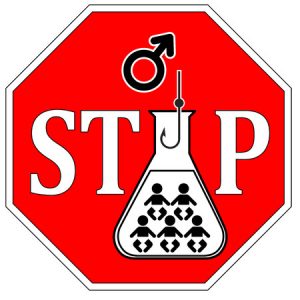

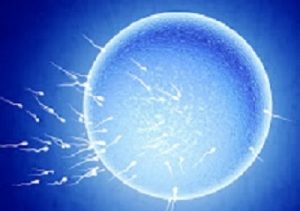 It is a profound irony that as we allow even very late term fetuses to be aborted on one hand, scientists are finding radical nature-bending ways to assist people have babies–including methods that could shatter familial norms.
It is a profound irony that as we allow even very late term fetuses to be aborted on one hand, scientists are finding radical nature-bending ways to assist people have babies–including methods that could shatter familial norms. December 18, 2017 (
December 18, 2017 ( by
by  LONDON, England, October 16, 2017 (
LONDON, England, October 16, 2017 (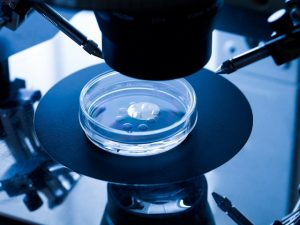 Ten years ago, one in 35 Australian babies were born as a result of IVF treatment. Today, that number has tracked to one in 25 babies. In the Netherlands, one in 15 births is as a result of IVF treatment. Now, world-renowned Dr John Aitken, the University of Newcastle laureate professor, the director of the University’s Priority Research Centre for Reproductive Science and the 2012 New South Wales Scientist of the Year, is
Ten years ago, one in 35 Australian babies were born as a result of IVF treatment. Today, that number has tracked to one in 25 babies. In the Netherlands, one in 15 births is as a result of IVF treatment. Now, world-renowned Dr John Aitken, the University of Newcastle laureate professor, the director of the University’s Priority Research Centre for Reproductive Science and the 2012 New South Wales Scientist of the Year, is  If you believe that “all kids need is love” then these
If you believe that “all kids need is love” then these  M
M


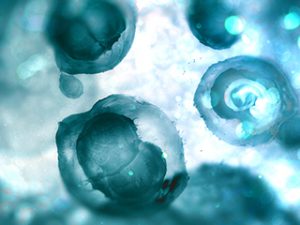 http://www.ewtnnews.com/catholic-news/US.php?id=15601
http://www.ewtnnews.com/catholic-news/US.php?id=15601
 With infertility more common than ever and birth rates around the world at a record low, a crucial first step for couples trying to get pregnant is to clearly understand exactly when they are fertile. Yet that is something just 13 per cent of women surveyed were able to identify according to a new study just published in the Australian and New Zealand Journal of Obstetrics and Gynaecology which surveyed over 1000 New Zealand women. That was despite a third of the women reporting that they monitored their ovulation.
With infertility more common than ever and birth rates around the world at a record low, a crucial first step for couples trying to get pregnant is to clearly understand exactly when they are fertile. Yet that is something just 13 per cent of women surveyed were able to identify according to a new study just published in the Australian and New Zealand Journal of Obstetrics and Gynaecology which surveyed over 1000 New Zealand women. That was despite a third of the women reporting that they monitored their ovulation.
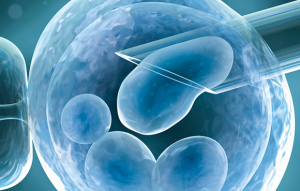
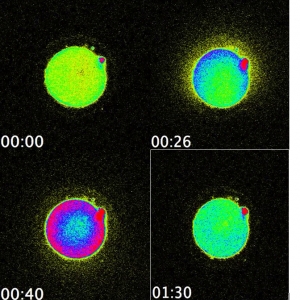
 March 4, 2015 (
March 4, 2015 (
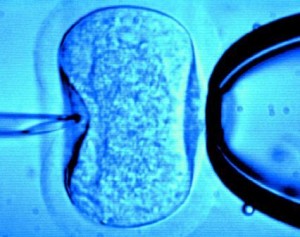
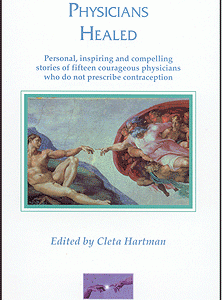
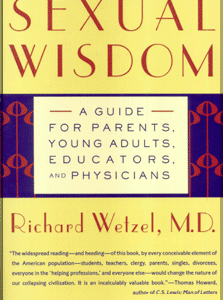

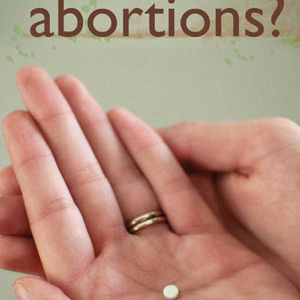

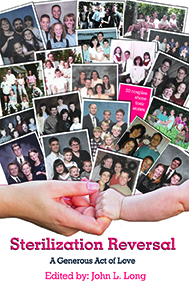
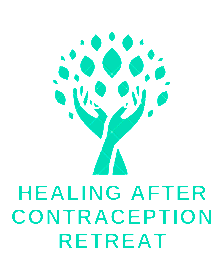
A 40th birthday for IVF
Philippa Taylor
40 years after her birth it is estimated that more than seven million babies have been born as a result of IVF and other assisted reproduction treatments. Around 2.4 million assisted reproductive technologies (ART) cycles are estimated to take place each year world-wide, with about 500,000 babies born as a result. If rates stay at current levels, then a million people alive at the end of the century will owe their lives to assisted reproductive technologies (1.4 percent of the global population).
40 years ago it was generally assumed that IVF would remain rare. However there has since been an explosion of assisted fertility services: intracytoplasmic sperm injection (ICSI), gamete and embryo freezing, gamete and embryo donation, embryo genetic diagnosis and surrogacy, to name some. The most common fertility treatment now is ICSI, accounting for around two-thirds of all treatments worldwide, with conventional IVF around one-third (proportions that vary across countries).
Infertility is deeply distressing and can affect every area of life for those struggling to conceive – as many as one in six couples. The Bible views childlessness as a painful, personal tragedy (Samuel’s mother Hannah’s anguished prayer illustrates the stress of infertility, as does Rachel in Genesis 30) while the Psalmist praises the God who ‘gives the barren woman a home, making her the joyous mother of children’ (Psalm 113:9).
IVF can provide couples with a child they desperately want. And it has brought many precious new lives into being, and real happiness to millions of parents.
Therefore, many now think IVF is the answer to infertility.
But it is not. While the IVF industry and media focus on and market the success stories, the average delivery rate from ART treatments are around just 19 percent per cycle – a global IVF cycle failure rate of around 80 percent. In the UK, the Human Fertilisation and Embryology Authority reports a ‘success’ rate of 26.5 percent . This ‘success’ rate actually means that 73.5 percent of cycles do not lead to a birth.
Success rates for IVF diminish rapidly after 35 years of age for women, largely because of loss of ovarian follicle reserve and oocyte quality with age. Even a woman under 35 years has less than a one in three chance of having a baby per embryo transferred, using her own eggs and partner’s sperm. A woman in her early 40s only has about a one in ten chance of having a baby per embryo transferred. And the success rate drops to a mere two percent for women over 44. This is highly relevant in a time when more and more women are delaying childbirth to concentrate on jobs and careers. When celebrities in their 50s become pregnant, what the media do not tell you is that it is almost always with a donor egg (indeed, 59 percent of women over 44 years used donor eggs in their treatment).
IVF heartbreak is real. IVF is no guarantee of success, despite all too often being touted as such. Added to this is the significant financial, emotional and physical toll that IVF can have on women.
Yet still, with one in six couples experiencing problems conceiving, the fertility industry is thriving. It is estimated to be worth over £600 million in the UK alone, with one cycle of IVF costing up to £5,000 or more.
There are some very troubling aspects of the fertility industry.
For instance, the number of babies born with health challenges (see here and here too), the use of medically unproven techniques and ‘add-ons’, poor regulation, the shocking commercialisation and exploitation of women’s wombs and eggs (see here too) and the change to ‘traditional’ notions of family structure and biological parenthood, through gamete donation (which can bring much heartache to the offspring) and surrogacy. A dead or dying person can have their reproductive tissue removed to enable someone else to have a child – even a grandmother.
IVF has also opened what many regard as a Pandora ’s Box of genetic engineering, cloning, pre-implantation genetic diagnosis (screening out of embryos), embryonic stem cell harvesting, research on three parent babies and animal-human hybrids. Many IVF programmes involve the production of spare embryos, which are then used for research, disposed of, or frozen for future use. Between 1990 and 2013 over two million were allowed to perish, according to a Parliamentary answer. Now, over 170,000 IVF embryos perish every year. Embryos are experimented on, donated to other couples, frozen indefinitely … or even turned into jewellery.
The last 40 years of IVF and ART have given many couples happiness but even more couples, dashed hopes. The next 40 years will undoubtedly bring even more possibilities for the fertility industry, but what is possible is not always right.
A moral vision, especially one shaped by a Christian understanding of the person and family, has to be prepared to say ‘no’ to some exercises of human freedom and to turn away from technology that is possible but unwise. With fertility treatments, while we can and should use our God-given skills to help alleviate infertility we should also be prepared to acknowledge that there may be suffering we are free to end, but ought not to, that there are children who might be produced through artificial means, but maybe ought not to be.
Philippa Taylor is Head of Public Policy at the Christian Medical Fellowship in the UK. She has an MA in Bioethics from St Mary’s University College and a background in policy work on bioethics and family issues. This article has been abridged from the original post on the CMF blog. To read the original article, click here.
Posted in Embryonic Stem Cells, IVF, News & Commentary, Pro-life issues | No Comments »